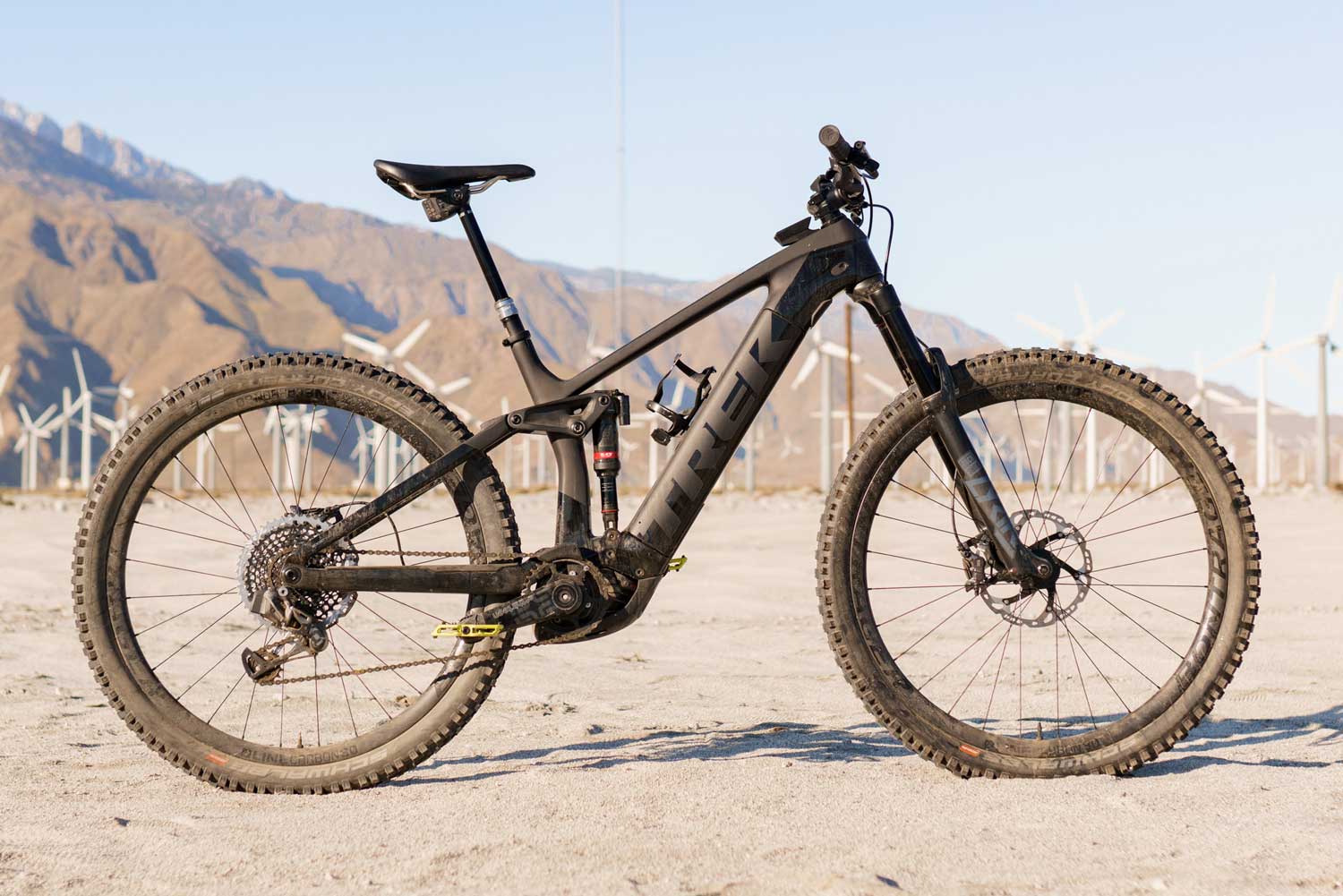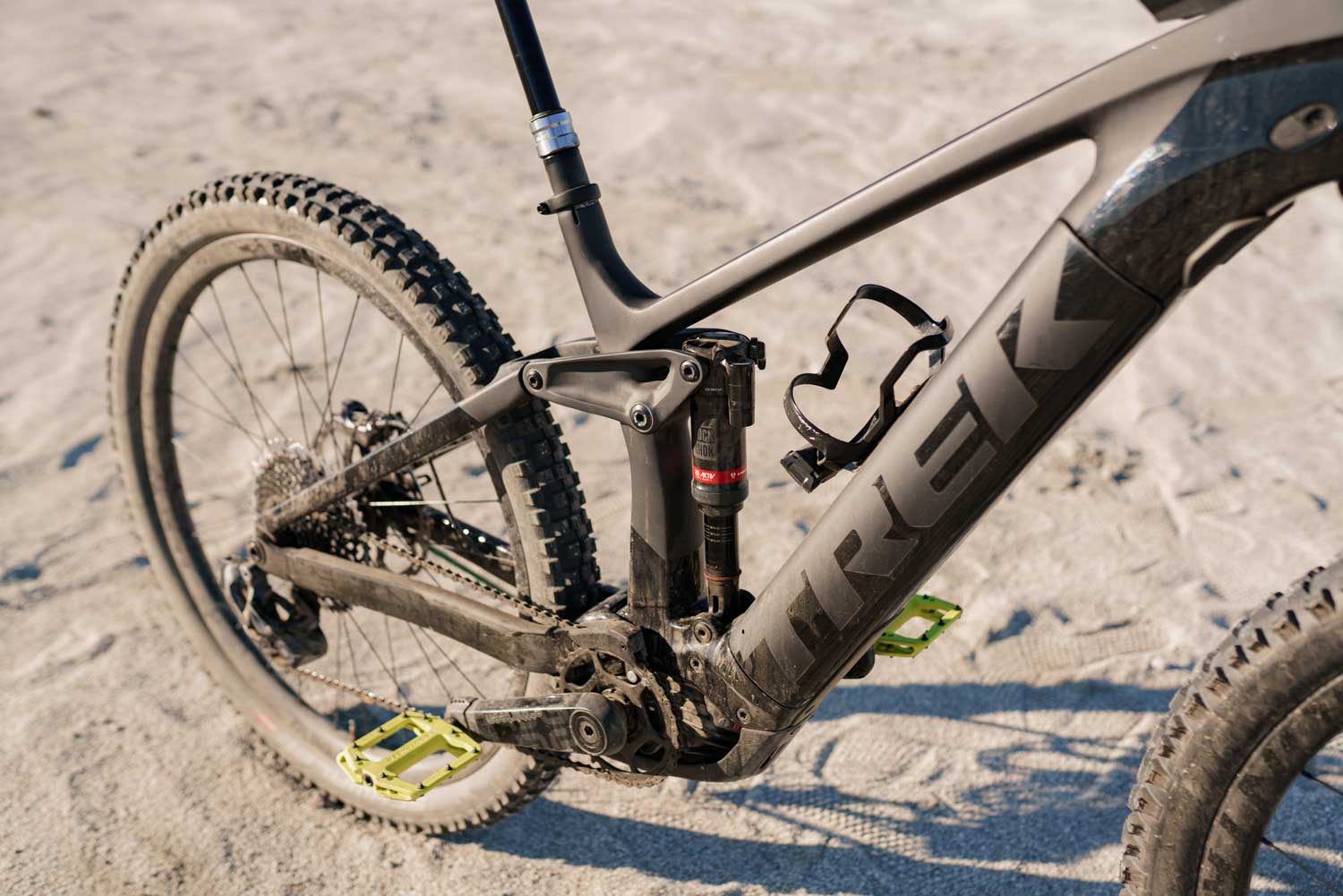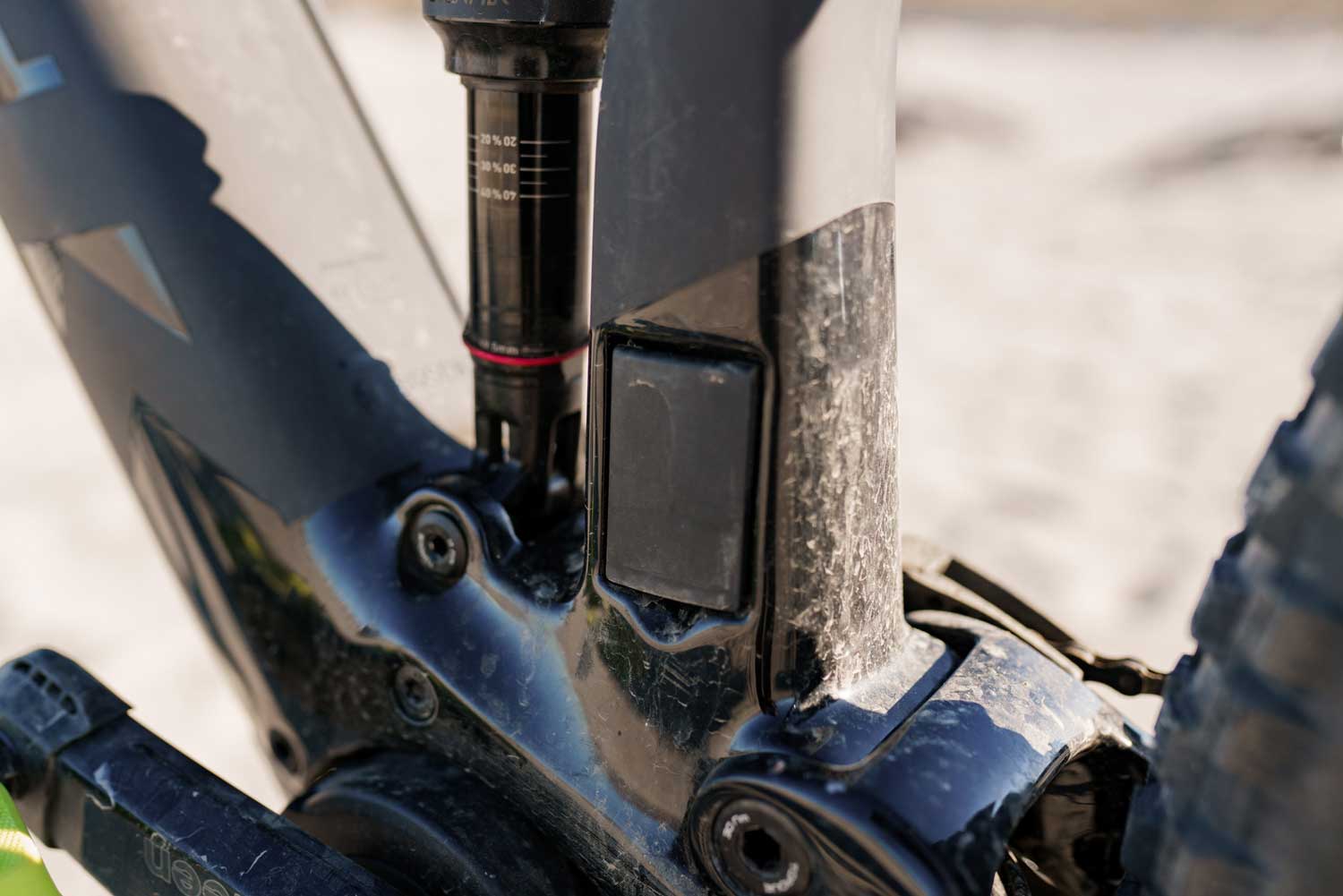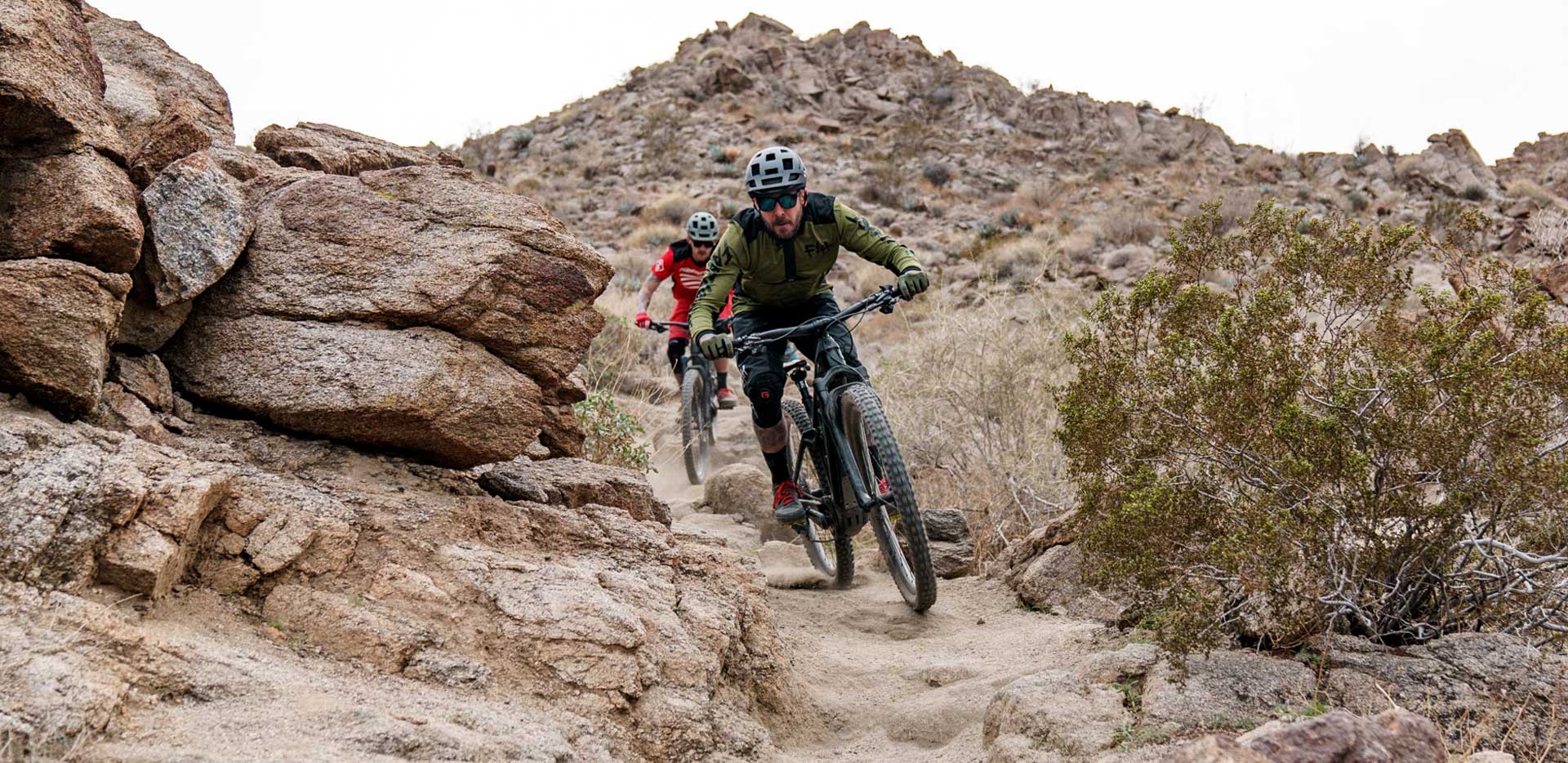
Trek Rail 9.9 eMTB Review
By Drew Rohde | Photos by Dusten Ryen
Charged by RISE Brewing
The most expensive bike in our 2020 eMTB Roundup, the Trek Rail 9.9 spares no expense when it comes to spec or performance. Built to be an all-around trail performer, this 160mm front, 150mm rear wheel travel 29er impressed our testers right out of the gate. Even though we tested the highest spec Rail, the 9.9 model, we don’t think it’s necessary to spend this much to get a really awesome riding Trek ebike. In fact, the 9.8 model, the next model down from the 9.9, retails for $7,999 and retains many of the same ride characteristics. So, what made the Trek Rail 9.9 the king of the All Trail category? Let’s dig in to find out.
THE LAB
We have to lead off The Lab section with what is very likely the biggest factor helped the Trek eek out the overall All Trail title. The all-new Bosch Performance Line CX motor absolutely stoked every single rider out. The smaller, lighter magnesium motor produces 250 watts and 75Nm of torque to give riders the best feeling assistance across the board. Some motors had strengths and quirks, but this motor impressed every one of our ten riders without any negatives. The Bosch PowerTube 625 battery is easily removable via a keyed lock and offers an impressive range, perhaps only bested by the Specialized Levo’s 700Wh depending on the power mode selected.
Component spec is a major factor of the $12,000 price tag. Bontrager Line Pro bar, stem, and carbon Bontrager wheels work together with E*thirteen’s E*spec Race Carbon cranks and the electronic SRAM X01 Eagle AXS shifter/derailleur combo. We had an issue on trail two times with the front chainring coming loose on us mid-ride. We’d suggest keeping an eye on this after break-in and ensuring you snug it up after the first break-in rides.
SRAM’s electronic Reverb AXS with 170mm of travel also comes spec’d on the Trek Rail 9.9. Suspension duties are handled by a Rock Shox Lyrik Ultimate DebonAir eMTB optimized fork and a Rock Shox DebonAir spring with RE:aktiv rear shock. The eMTB specific fork has an oversized crown and the beefy appearance better suits the demands and looks of heavy ebikes. A nice call on Trek’s part to spec this fork.
The 150mm OCLV carbon frame sports a Motor Armor skid plate, Mino Link geometry adjustment, Knock Block steering limiter to protect your frame, and Control Freak cable routing. Like all other Trek mountain bikes, it also features ABP, Boost148, and a 12mm thru-axle. We did have some issues with the rear axle coming loose, so be sure to check it’s tightness and maybe even add a little drop of blue LocTite.
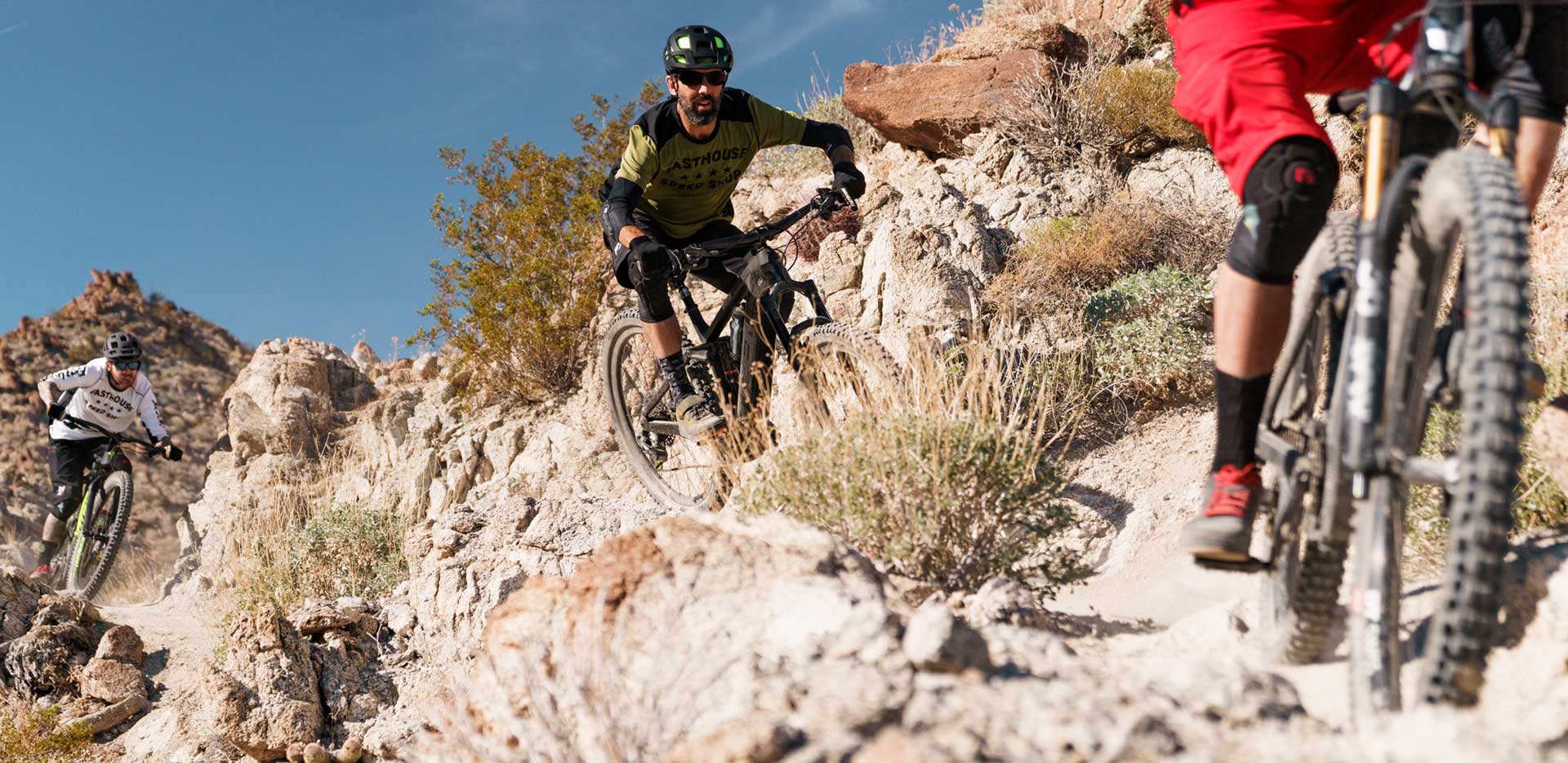
THE DIRT
In a very stacked field of competitive trail ebikes, the Trek Rail 9.9 stood just above the rest when it came time to evaluate our criticisms. There weren’t any bikes that flat out sucked, in fact, every bike there was good at some things and for could be ideal some people. So, this roundup had us focusing on where bikes weren’t ideal. Some bikes could be more fun than the Rail on super steep DH trails (Norco Sight VLT 29), some could be shorter, snappier, and more fun on tighter singletrack (Specialized Levo), meanwhile, others are much more affordable (Fezzari Wire Peak). However, when it came time to pick the bike we most wanted to take home, what we wanted to ride the most, and what bike we felt compromised the least performance on a broad variety of trails, the Trek Rail was it. It wasn’t the best at everything, but it was better than the rest at more things.
One thing that most of our riders didn’t actually love about the 9.9 was the SRAM AXS group. It’s a very expensive upgrade and the benefits don’t outweigh the cost in our opinion. It requires charging two additional batteries, dropper post, and derailleur, and none of us really enjoyed the ergonomics of the shifter. It was nice reducing the clutter and ditching cables, but it just wasn’t nice enough to get over the awkward shift paddle and equally large dropper post remote. That being said, the system did perform well, shifted smoothly and on this particular bike, we had no issues with the battery life of the SRAM parts; however, the batteries on our Giant Reign E+ died very quickly.
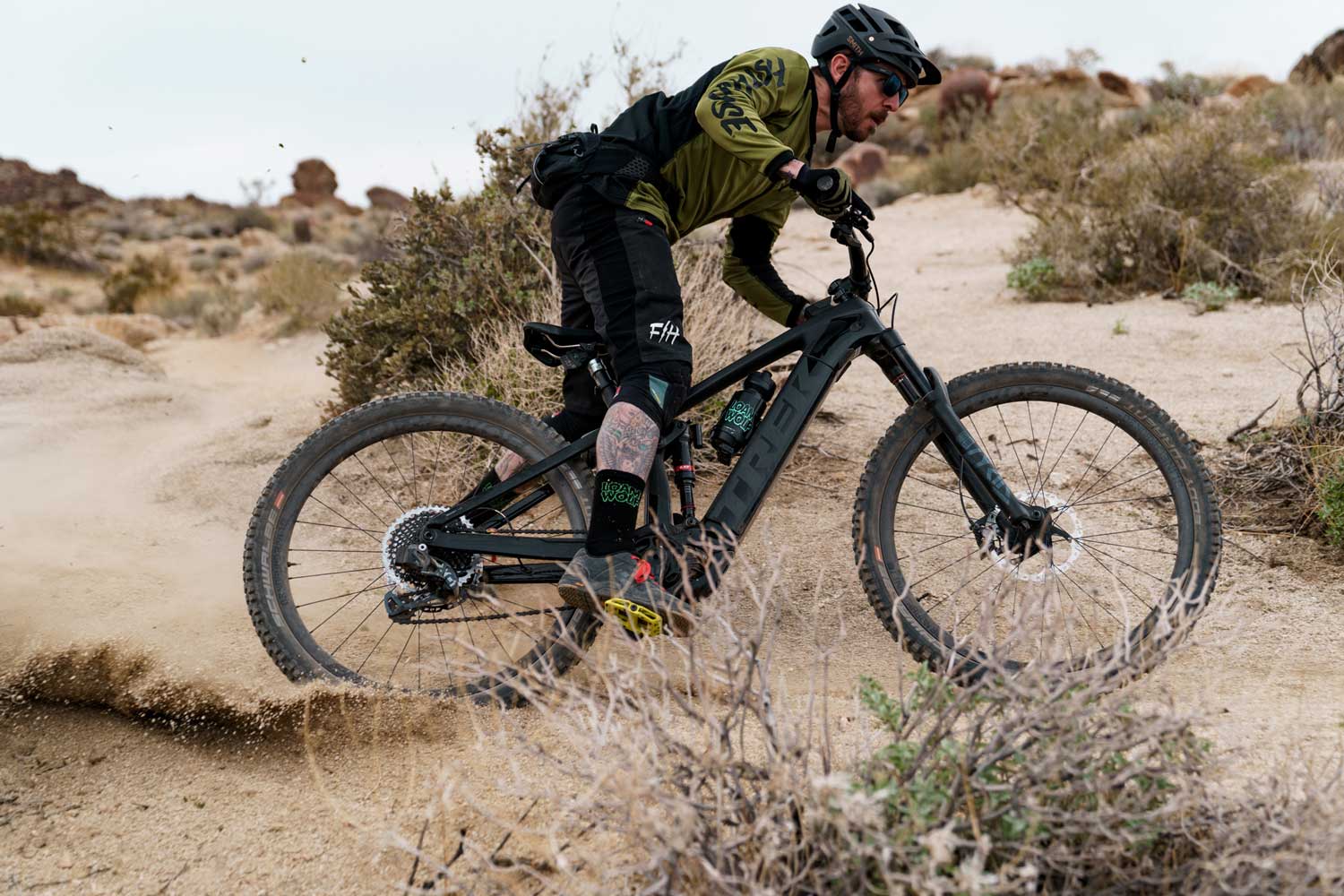
Our size 19.5 (large) test bike had a very capable and confidence-inspiring feel. It wasn’t a dog on tighter, flatter trails like the Norco Sight, however, it was a lot more stable and planted at speed than the Levo. It also has a removable, large capacity battery and the best climbing performance thanks in part to the newest Bosch motor. Our testers were constantly amazed that they could enter tight, technical switchbacks with near-vertical rock slabs after the apex and just crawl up them every time.
When it came time to descend the Rail, it was equally fun and well-rounded. Whether we were attacking high-speed sections with choppy rock gardens or threading the needle between cacti and house-size boulders, the Trek Rail got it done. The Rail is a vast departure from the soft, planted feeling Powerfly we rode from Trek last year. Instead, this bike is lively, poppy, and offers a more race-influenced feel. It’s slightly stiffer off the top, meaning it translates a bit more feedback to the rider but also allows for riders to push harder and faster. We did an unboxing video here where we compare the numbers of the new Rail to the Powerfly, and they’re pretty notable, of course, so is the difference in performance.
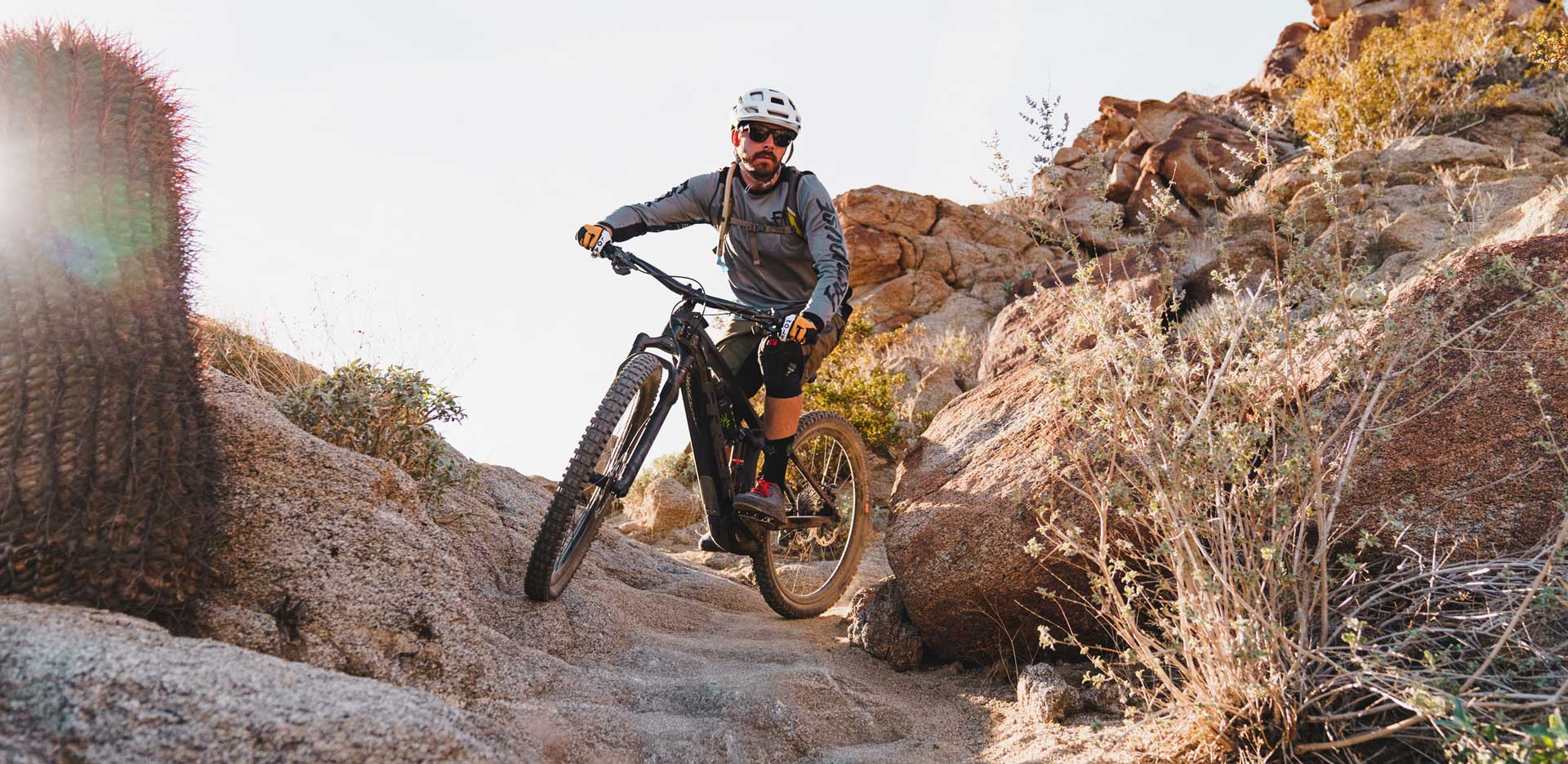
The Wolf’s Last Word
Do you need to buy the $12,000 Trek Rail 9.9? No. In fact, unless you’re just that kinda guy, we’d suggest saving your cash and going with the 9.8. Shoot, even if you do like spending cash, we’d suggest you go with the 9.9 XTR option as it’s $500 cheaper and eliminates two extra batteries that you’ll need to charge and has much better ergonomics than the SRAM AXS units.
Trek not only did a great job improving the Rail from last year’s Powerfly, but they did a great job making an ebike that our group of testers were constantly fighting over in a field of 16 incredibly capable machines. It was a tooth and nail, no-holds-barred fight, and our testers always root for the underdogs, but ultimately, the Trek Rail 9.9 rolled away with the All Trail category win. It isn’t the best at everything, but it is better than the rest at more things.
Price: $11,999
Weight: 49.11 lbs
Website: Trekbikes.com
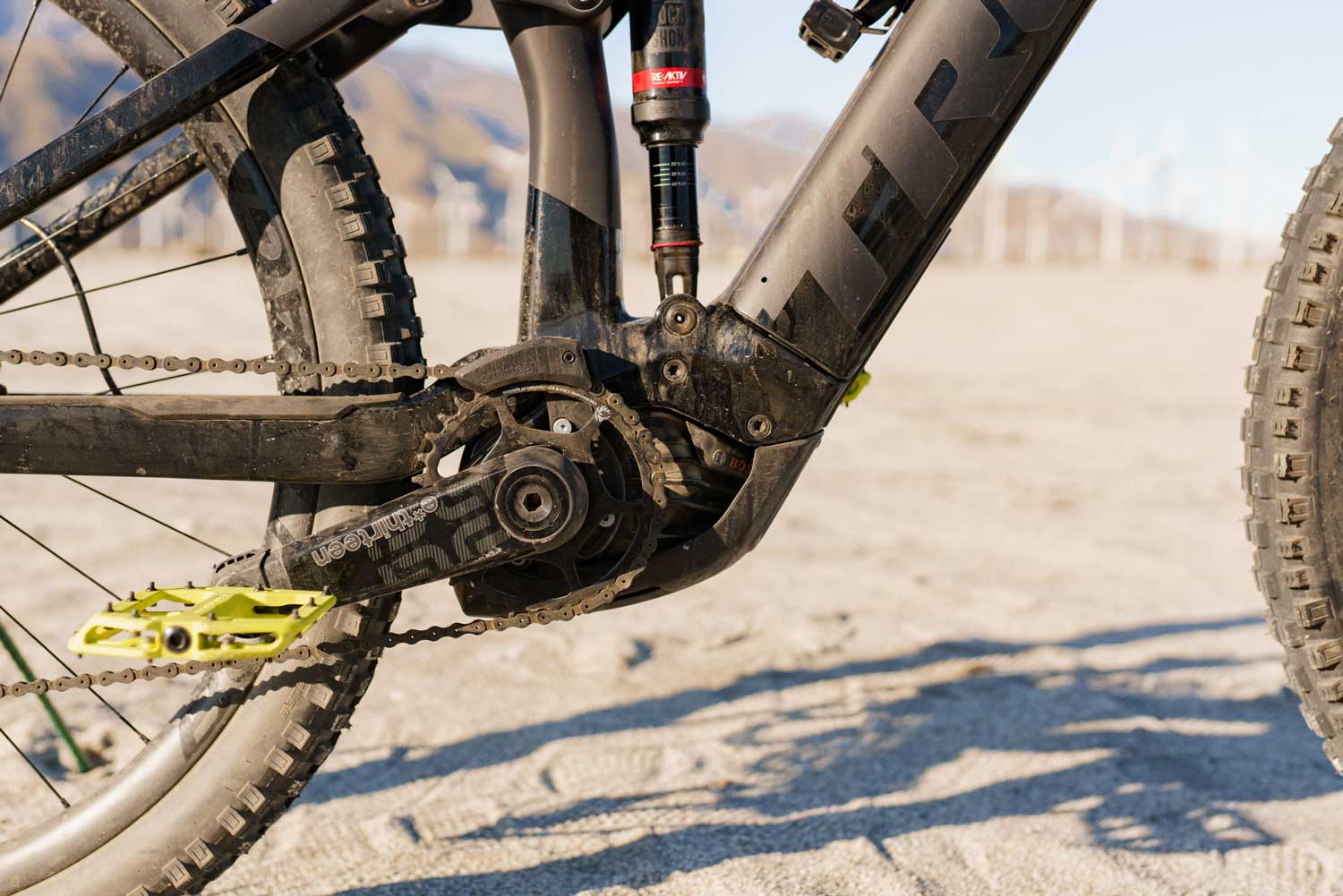
CHASSIS
Frame: OCLV Carbon; 150mm
Fork: Rock Shox Lyrik Ultimate DebonAir, eMTB Spec, 42mm offset, 160mm
Shock: Rock Shox Deluxe RT3 DebonAir, RE:aktiv; 230×57.5
POWERPLANT
Battery: Bosch PowerTube 625
Drive Unit: Bosch Performance CX Magnesium, 250w, 75Nm
COCKPIT
Brakes: Shimano XT 4 Piston; 203mm
Handlebar: Bontrager Line Pro Carbon; 780mm
Saddle: Bontrager Arvada
Seatpost: Rock Sox Reverb AXS; 170mm
Shifter: SRAM Eagle AXS; 12s
Stem: Bontrager Line Pro; 50mm
WHEELS
Hubs: Bontrager Line
Rims: Bontrager Line Carbon 30
Tires: Bontrager SE5; 29×2.6”
DRIVETRAIN
Cassette: SRAM XG-1295; 10-50t
Cranks: E*thirteen E*spec Race Carbon; 165mm, 15t
Derailleur: SRAM X01 Eagle AXS; 12s
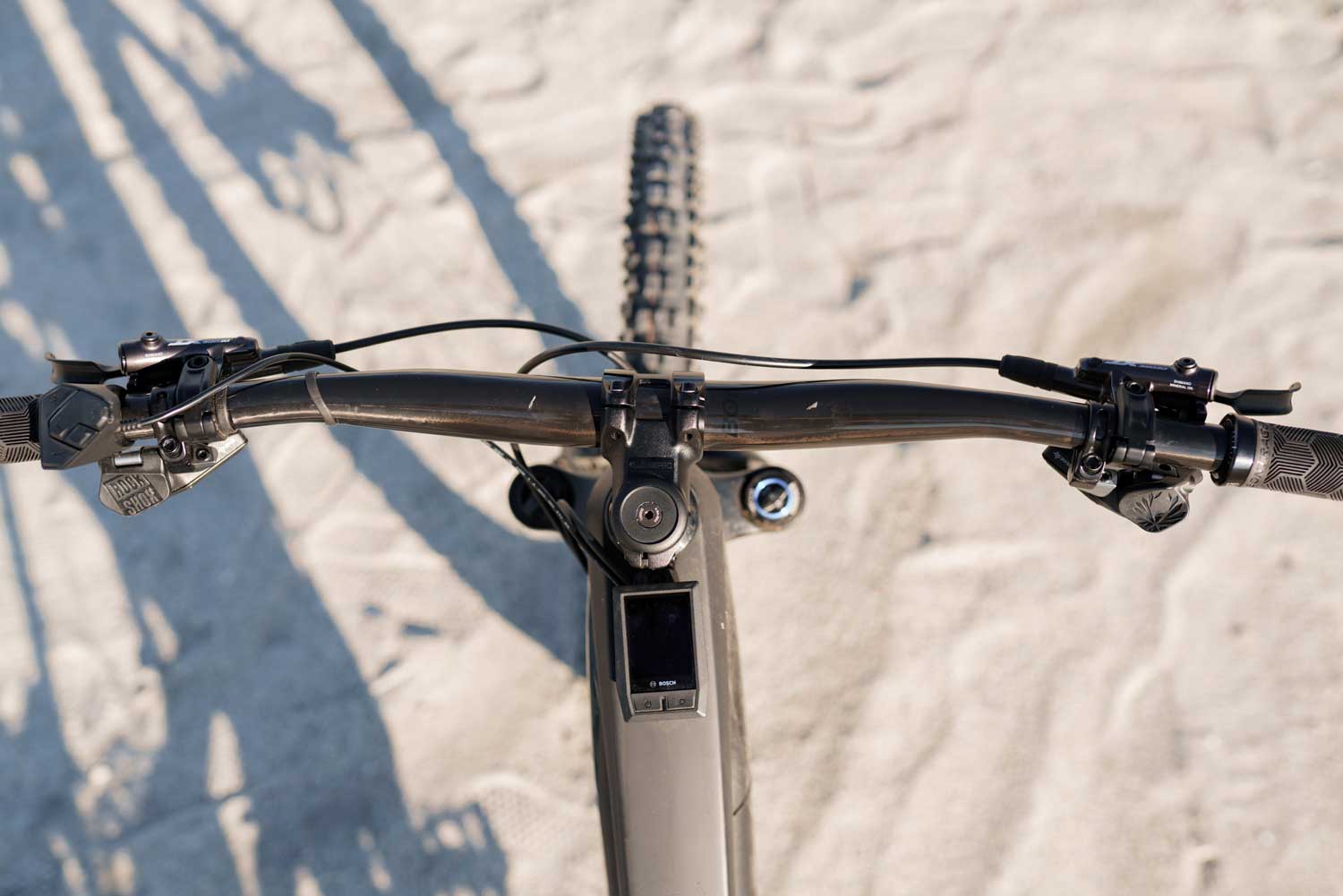
We Dig
Bosch Motor!
Fun to Ride
Climbs Anything
Likes Going Fast
We Don’t
SRAM AXS Ergonomics
Expensive (Check the 9.8 model)
Chainring Loosening
Leave A Comment & Win Free Schwag
Want to win some free schwag? Leave a comment and vote up the most thoughtful comments and each month we’ll pick a winner. The person with the smartest and most helpful replies will earn some sweet new gear. Join the Pack and get the latest news and read the latest reviews on the top mountain and electric mountain bikes.

